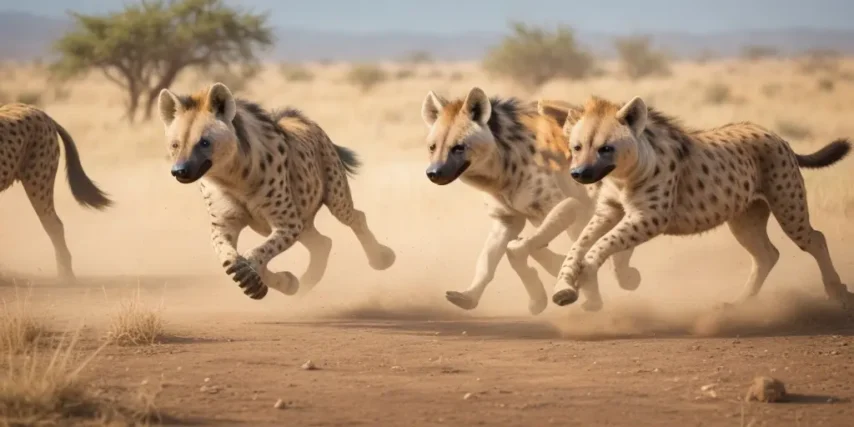The Intriguing Feeding Habits of Hyenas: Nature’s Consummate Scavengers
Hyenas, often misunderstood and misrepresented, are among the most fascinating creatures in the animal kingdom. Known for their haunting laughter echoing through the African savannas, these carnivores have evolved unique feeding habits that distinguish them as nature’s consummate scavengers. In this article, we delve into the intricacies of hyena feeding behavior, exploring their dietary preferences, hunting strategies, and social dynamics.
Understanding Hyena Diets:
Hyenas belong to the family Hyaenidae, comprising four species: the spotted hyena, brown hyena, striped hyena, and aardwolf. Each species exhibits varying dietary preferences and feeding behaviors. The spotted hyena, for instance, is renowned for its opportunistic feeding habits, capable of devouring nearly all parts of a carcass, including bones and hide. Conversely, the aardwolf subsists primarily on termites, showcasing a more specialized diet.

Feeding Strategies:
Hyenas employ diverse strategies to secure their meals, ranging from cooperative hunting to scavenging. The spotted hyena, known for its prowess as a hunter, often hunts in packs, utilizing teamwork and sophisticated communication to bring down prey. Their remarkable endurance enables them to pursue prey over long distances, ensuring a successful kill.
However, hyenas are equally adept scavengers, capitalizing on the kills of other predators or feeding on carrion. Contrary to popular belief, hyenas are not solely scavengers but rather versatile opportunists, capable of switching between hunting and scavenging depending on circumstances. This adaptability is key to their survival in the harsh and unpredictable African wilderness.
Social Dynamics:
Central to hyena feeding behavior is their complex social structure. Spotted hyenas, in particular, live in matriarchal clans, led by dominant females. Within these clans, individuals establish a hierarchical order, with access to food often determined by social status. Lower-ranking individuals may have to wait their turn or risk confrontation with higher-ranking clan members.
Interestingly, hyena cubs are born into this social hierarchy, with competition for resources beginning at a young age. Through playful interactions and subtle dominance displays, cubs learn the intricacies of clan dynamics, preparing them for survival in the competitive world of the savanna.

The Role of Scavenging:
Scavenging plays a crucial role in the ecology of African ecosystems, with hyenas serving as vital scavengers. Their scavenging behavior helps prevent the buildup of carrion, reducing the risk of disease and providing sustenance for a myriad of other species, including vultures and insects. Moreover, hyenas often scavenge from kills made by large predators such as lions, contributing to a complex web of interspecies interactions.

The Evolutionary Advantage:
The evolution of scavenging behavior in hyenas can be attributed to various factors, including competition with other carnivores and the unpredictable nature of hunting success. By diversifying their feeding strategies, hyenas have gained a competitive edge in the African savannas, maximizing their chances of survival in challenging environments.
In conclusion, the feeding habits of hyenas exemplify the remarkable adaptability and resilience of these enigmatic carnivores. From cooperative hunting to opportunistic scavenging, hyenas have mastered a range of strategies to secure their meals in the unforgiving wilderness. By understanding the intricacies of hyena feeding behavior, we gain valuable insights into the complex dynamics of African ecosystems and the delicate balance of predator-prey relationships. As stewards of our natural world, it is imperative that we continue to study and appreciate these fascinating creatures, ensuring their conservation for generations to come.







